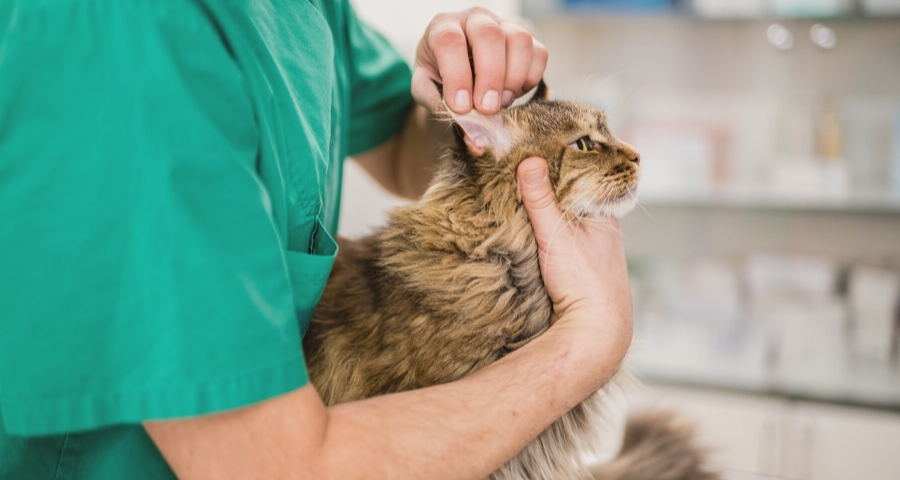| |
|
|
| |
Mira Mar Veterinary Hospital
|
|
| |
|
|
| |
|
|
| |
|
|
|
|

|
| |
SEPTEMBER NEWSLETTER
|
|
| |
|
|
| |
Thank you to everyone who took advantage of our Pet Dental Month promotion in August. We have examined lots of mouths and cleaned lots of teeth in the past month! We still have some vouchers and some free samples leftover, so we will be continuing the Dental Month offer while stocks last. Please call the clinic on 9841 5422 if you would like to take us up on a free dental check for your pet, or discounts off dental pet food for those pets having their teeth cleaned.
This newsletter edition has plenty of information about itchy skin, allergies and ear infections - all things we start to see more of in Spring and Summer! We hope you find the articles helpful for your fur family. |
|
| |
|
|
| |
CALL US NOW!
|
|
|
|

|
| |
PUPPY PRESCHOOL CLASSES - AUGUST
|
|
| |
|
|
| |
Nurse Andrea has been rushed off her feet with a not one but TWO full puppy classes in August. Congratulations to the awesome little pooches who have graduated recently!
Class One: Doug, Odie, Leo, Rodney, Maggie, Willow, Venn and Benny.
Class Two: Simba, Lucca, Maiya, Winston, Poppy, Trixie and Henry.
Apologies that not all puppies got their photo taken this month. Nurse Andrea is on holidays for a few weeks, and we think she might have already been in holiday mode!
Puppy Preschool classes will resume at the end of September. Please call the clinic on 98415422 if you would like to book your puppy into our next class! |
|
| |
|
|
| |
CALL NOW
|
|
|
|

|
| |
Why does my pet lick their feet?
|
|
| |
|
|
| |
There are few things more irritating than your pet starting a thorough paw-licking session just as you’re falling asleep! Excessive foot licking is a pretty common problem in dogs, and can occur for a number of reasons.
Skin irritation
Irritated skin is one of the most common causes of paw licking, and can be triggered by:
- Underlying allergies, such as:
- Atopy (allergies to airborne environmental materials, such as plant pollens)
- Food allergies
- Contact allergies (allergies to touching certain plants or floor cleaning products)
- Flea bite allergies
- Infections with mites
- Foreign bodies, e.g. grass seeds, stuck in the skin or fur
If your pet develops sore, inflamed skin, their natural response is to try to soothe the discomfort with licking. Unfortunately, excessive licking can actually worsen the problem by making the skin moist and raw, which then encourages an overgrowth of bacteria or yeast.
Pain
Any issue that causes pain in your pet’s paw can cause them to excessively lick the area. Young pets will frequently lick at broken nails, whereas older pets may be affected by painful arthritic changes or tumours associated with their paws.
Behavioural issues
In some cases, excessive paw licking can be a manifestation of an underlying behavioural issue, such as anxiety, an obsessive-compulsive disorder, or even boredom in an under-stimulated or under-exercised pet.
How can we help?
If your pet is licking their paws excessively, it’s best to book an appointment with one of our vets for further assessment. We’ll examine your pet thoroughly, and suggest further diagnostic testing or treatment trials to help confirm the underlying issue.
Once we have a diagnosis for your pet’s “irritating issue”, we can discuss treatment options to effectively manage the problem, and have everyone sleeping soundly again in no time! |
|
|
|

|
| |
Hypoallergenic diets for itchy pets
|
|
| |
|
|
| |
If your pet suffers from recurrent bouts of ear or skin disease, you’ll know how frustrating the issue can be - not to mention uncomfortable for your poor pet!
Ear or skin disease that recurs with no seasonal pattern can suggest a potential food allergy (also known as an adverse food reaction). Most commonly, pets develop an allergy to particular types of protein - with beef, dairy and chicken being some of the most common triggers.
Unfortunately, pets can develop allergies to proteins they have previously been fine with, which can make diagnosis tricky!
Hypoallergenic dietary trial
If your pet is showing symptoms suggestive of a food allergy, we’d advise booking a consultation with one of our vets. We will generally perform some diagnostic testing to rule out other common causes of skin/ear irritation (such as mites or fleas), and check for secondary bacterial or yeast infections which can complicate allergy symptoms.
Our vets can then guide you on how to perform a hypoallergenic dietary trial. This can be done via:
- A novel protein diet – this involves feeding a single protein source that your pet has never eaten before, combined with a single carbohydrate such as potato. This is generally a home-cooked diet, as many commercial pet foods can contain proteins that are not listed on the front of the packet!
- A hydrolysed protein diet – this is a prescription commercial veterinary diet containing proteins that have been altered to make them unlikely to trigger any inflammation in your pet
A properly-performed hypoallergenic dietary trial (followed by a staged “rechallenge” with suspect trigger proteins) can confirm if your pet has food allergies and, if so, what specific proteins they’re allergic to. In the long term, this means you may be able to eliminate your pet’s symptoms just by avoiding certain trigger foods. |
|
|
|

|
| |
Mars Petcare launches Karma, an eco-minded pet food
|
|
| |
|
|
| |
Global enterprise Mars Petcare, owners of Pedigree, Whiskas and Royal Canin have recently launched a new pet food brand in the United States, Karma. The initiative is backed by the business’s drive to encourage greater awareness of sustainability.
Working with international recycling company TerraCycle, the new brand’s dry pet food bags are being produced from nationally recyclable materials across the United States, through Mars Petcare’s Karma Recycling Program.
On top of their recycling efforts, the Karma dog food manufacturing site has committed to zero-waste to landfill. CEO of TerraCycle, Tom Szaky, believes that implementing these initiatives will help to “drive awareness to the issue of waste and elicit change in the consumer.”
With celebrity influence, the pet food brand has also launched a niche community, Karma Kollective, for fellow eco-minded pet owners. The online community offers pet owners tips and inspiration for leading a more sustainable, eco-conscious lifestyle. Members can even share their own inspiration on social media with the #TheKarmaKollective hashtag. “From cleaning up nature trails to donating your old dog toys to a local shelter, there are many ways dogs and humans can do good together for Mother Nature,” officials of the Karma Kollective said.
Making a public statement to take environmental responsibility, Mars Petcare, “with an environmental footprint the size of a small country” aims “to help drive the solutions needed for the planet,” said Barry Parkin, Chief Procurement and Sustainability Officer.
Inciting a company philosophy that “the world we want tomorrow starts with how we do business today," Mars Petcare have also announced an extension of their decade-long sustainable fish partnership with NGO, WWF, through to 2025.
Ikdeep Singh, president of Mars Petcare North America, expressed that "pets can be an important part of a more sustainable world. We're proud to launch the Karma brand - innovative, plant-first food for dogs created with pets and the planet in mind."
Learn more about the work Mars Petcare is doing for the planet, people and pets here, and the Karma pet food through Pet Product News and Pet Business. |
|
|
|

|
| |
Animal News In Brief
|
|
| |
|
|
| |
Jack the rescued Labrador
Image source: the ABC
Should native wildlife be kept as pets?
An ecologist has shared their perspective on bringing wildlife into the home, as pets. The suggested societal change to opt for a wallaby over a weimaraner was hatched in the hope that people would gain a greater interest in protecting wildlife. In his interview with ABC Radio Perth, Mike Archer expressed his fear that keeping things as they are is a potential “passport to extinction” for wildlife. He stresses that the concept of leaving native animals in the bush is no longer a safe option, warning the public that “they're not okay, not even in Kakadu.” The fight to conserve animals in protected areas must continue, but as the ecologist puts forward, we need other strategies too. Having kept a Western quoll and swamp wallaby as pets himself, Mr Archer describes his marsupial mates to be just like cats and puppy dogs, sitting on his lap and even using a litter box! Wildlife “are ready to cross the line and become your best friend,” said Mr Archer. The keeping of wildlife as pets is currently subject to strict and specific licensing requirements in each state and territory.
Read more about ecologist Mike Archer’s perspective on the ABC.
-----
An unlikely survival of a lost dog in the Kimberley
The sweltering hot and dry outback is a hell of a place to get lost. Recently an incredible Labrador spent seven days missing in the remote Kimberley region of Western Australia. After travelling up together from Tasmania, Len Simpson and his best mate Jack the Labrador were camping on a night like any other, when Jack went for a wander and didn’t come back. In frantic concern for Jack’s welfare, Len searched five kilometres a day in each possible direction of the surrounding area. With no luck finding Jack, Len contacted his daughter Kate, who created a missing dog post that flooded social media. Shared among online noticeboards across the Kimberley and Pilbara regions, the social media post led Len a step closer to Jack’s rescue, when the notice was seen by a travelling Good Samaritan. Bringing food to Len’s camp each day and printing out missing dog posters, traveller Jolina Latusek took it upon herself to collect Jack, when he was finally located outside the local Indigenous community of Bidyadanga. Leaving a note for Len, who was out on another five-kilometre search expedition, Jolina rushed to get Jack to the local vet in Broome. It was feared that Jack wouldn’t make it, with the possibility that he could have contracted heat stroke or a snake bite, but on physical assessment, veterinarian Dr Chiquita Minshull “assessed that he was okay”. After a seven-day, off-track, outback drift, Jack was at long last reunited with Len in Broome.
Read more about Jack’s rescue from the ABC.
-----
Prevention is paramount against ehrlichiosis
Many pet owners are still unaware of the deadly tick-spread disease, ehrlichiosis. One veterinarian has compared the disease to radiation sickness - as it affects the animal’s bone marrow, kidneys and the liver - and with growing case numbers of dogs affected by ehrlichiosis, it’s now more important than ever that dogs are properly protected.
The common brown-dog tick is the sole vector carrying the bacterium ehrlichia canis which causes ehrlichiosis, and without sufficient prevention, any dog that has the tick latch onto them can be infected with the disease within a mere hour. Veterinarian, Dr Campbell Costello, from Outback and Airborne Veterinary Services, who sees more and more dogs dying of this disease, is urging for greater awareness. He warns that people ignorant of the disease could let their dogs carry the diseased tick and spread to other areas of the country, without even knowing it. With brown-dog ticks populating across what is practically the entire eastern seaboard, it won’t be a “bush problem” Dr Costello says, “it will venture into Sydney, Brisbane, Cairns, Byron Bay, all those areas."
Due to the fast-moving nature of the disease, a tick prevention tablet doesn’t suffice on its own either, as the tablet can take up to five hours to kill the tick. Instead, Dr Costello recommends a monthly tablet as well as use of a repellent tick collar. Signs of ehrlichiosis can include dogs bleeding from the nose, bleeding into the lungs, a high temperature and being off their food. Overall, the trick with the tick is prevention. So, if you’re planning on heading to the outback with your pet, don’t go until your dog is fully protected.
If you have any concerns about ehrlichiosis in your dog, call our clinic immediately.
Read more about canine ehrlichiosis from the ABC. |
|
|
|

|
| |
Strange bedfellows: mites and fleas
|
|
| |
|
|
| |
Does the thought of fleas and mites give you a nasty, creepy-crawly feeling over your skin? Unfortunately, our pets can suffer these feelings of discomfort and more from actual fleas or mites if we leave them unprotected against these parasites!
Fleas
Whilst some pets seem minimally affected by fleas, they can be very irritating to other animals, causing red, itchy bumps that can become infected. Additionally, some pets can be allergic to the saliva of fleas, meaning that even a single flea bite can trigger a significant inflammatory skin reaction (known as flea allergy dermatitis).
Just a few fleas on your pet will produce a huge number of eggs, which will “sprinkle” around your pet’s environment. These eggs can lie dormant for months, hatching in warm conditions (which, indoors, is often all year round).
Mites
The most common skin mites of dogs and cats are sarcoptes and demodex, which can both cause “mange”. Sarcoptic mange tends to cause extreme itchiness, patchy hair loss, and crusty sores. Demodectic mange generally causes hair loss and skin scaling, but itchiness may occur if your pet’s skin becomes secondarily infected with bacteria or yeast.
Sarcoptic mange is highly contagious from other infected pets or local wildlife. Many normal pets have demodex mites in low numbers, and generally only young or immunocompromised pets develop symptoms.
Treatment and prevention
If your pet has any irritated skin lesions, it’s best to book an appointment with one of our vets, where we can perform in-consult skin tests and home treatment trials to check for fleas and mites, and rule out any secondary bacterial or yeast infections which may be worsening your pet’s discomfort.
As with many things in life, prevention is better than cure, so ask our friendly team for more personalised advice on the best safe and effective year-round flea and mite prevention products for your pet! |
|
|
|

|
| |
Get out of h-ear!
|
|
| |
|
|
| |
It’s very common for us to see pets who unfortunately suffer from recurrent ear infections. Rest assured, we are familiar with how to best manage this very challenging issue!
Making sure ear infections are properly treated
If your pet ever suffers from an ear infection, it’s best that we see them for an examination. A thorough exam helps us to determine if there are any obvious issues that would cause difficulties with effective treatment (such as a very wriggly uncooperative pet, or a very matted, hairy or narrow ear canal).
We will also take swabs from your pet’s ear to look at under the microscope, so we can check what is causing their infection. Different types of bacteria or yeast can cause similar symptoms, but need different medications for effective treatment.
If your pet has a significant ear infection, we will advise a recheck at the end of their treatment course – this helps us to ensure their issue is fully resolved. This way, if their problem returns, we know there’s likely an underlying trigger which needs further investigation.
Investigating recurrent ear infections
If your pet develops an unusual number of ear infections, we’ll discuss further investigation of their issue.
If we feel that the infections are not being completely cured with the standard treatments, we may discuss sedation or an anaesthetic for a thorough ear assessment and clean. This will allow us to flush out your pet’s ear canal (which is too uncomfortable to perform while your pet is conscious), and also check their ear drum to see if it’s damaged.
If your pet is developing repeat infections despite effective treatment of each episode, we’ll discuss investigation for a potential underlying allergy trigger. This will allow us to work out an effective long-term management routine to minimise ear flare-ups in the future.
Rest assured – your pet’s ears are in the best hands! |
|
|
|

|
| |
Butt-scooting
|
|
| |
|
|
| |
Does your dog frequently scoot their bottom on the floor? As well as being embarrassing for you (as pets seem to save this “party trick” for when guests arrive!), it can be a symptom of an underlying issue in your pet that requires veterinary treatment!
Why do some dogs scoot excessively?
Dogs commonly scoot their bottoms along the ground due to:
- Blocked or infected anal glands
- Intestinal worms
- Allergies causing itchiness around the anus
- Inflammation/infection of the vulva or urinary tract in females
How can we help to stop your pet’s scooting?
If your pet is scooting a lot, it’s best to have them assessed by one of our vets. We’ll perform a thorough examination, and we’ll also chat with you about when they were last treated for intestinal worms (and recommend an effective deworming medication if required).
If your pet’s anal glands are blocked, we can express them gently to reduce the irritation. Sometimes, a fibre supplement such as psyllium husk can help to keep the glands empty in the future. However, some pets require regular anal gland emptying every one-to-three months to avoid anal gland infections.
In female dogs, we will examine the vulva to ensure there is no obvious discharge, or surrounding skin fold infection. If we suspect a urinary tract issue, we can perform urine tests for further assessment.
If your pet persists in scooting despite management for any of the issues above, we may discuss investigation for potential underlying allergies. Atopy (allergies to airborne plant materials or dust mites) or food allergies can cause itchiness around the bottom in affected pets.
Once we reach a diagnosis for your pet’s particular problem, we can then advise on a long-term management routine to control their irritation and ban the butt-scoot from your household! |
|
|
|
| |
This email contains comments of a general nature only and is not intended to be a substitute for professional veterinary advice. It should not be relied on as the basis for whether you do or don't do anything.
All content © Pet Pack 2020 |
|
|
|
[Footer]
|